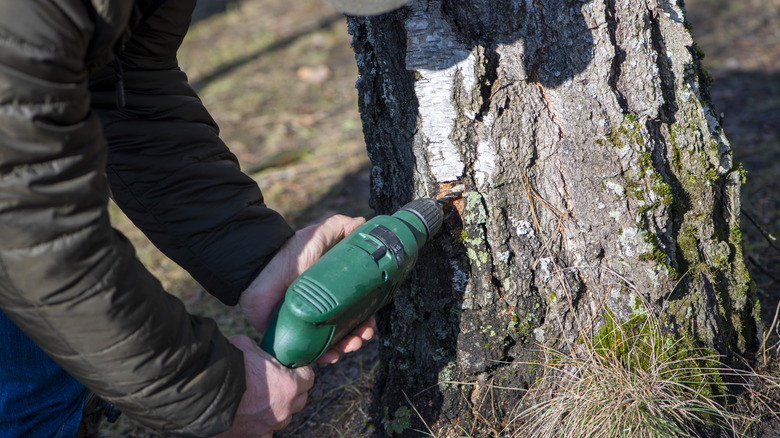Garden Trees, Shrubs & Vines
Sakshi Khaitan
Sometimes, growing gorgeous, healthy trees isn’t enough to have you rejoicing, no matter the variety and the landscape design. You might need a bird feeder to enjoy feathery friends nibbling at the seeds with the squirrels stealing some, a hammock to swing and bask in the sun for the much-needed vitamin boost, or ornamental decorations to lend your yard an artful spin. Perhaps what you’re truly looking for is a connection, as tendered by “tree faces” or masks that mirror human emotions and are hung easily on the wood. One thing common to all your choices: You’ll need to drill hooks into your trees to put them up. Luckily, most mature, healthy trees without any signs of disease or pest infestation are likely contenders as they can withstand injury and continue to grow past it.
While it’s undeniable that putting hooks on living lumber is bound to cause wounds, they aren’t different from pruning incisions. Given your woody features’ past endurance records — after all, haven’t they suffered from the mistakes made when planting trees? — they’re already versed in dealing with puncture damage. Still, it’s best to be cautious and stick to bolts and screws made from stainless or galvanized steel as they’re unlikely to rust. Also, avoid boring more than 10 holes in any tree to avoid damaging it permanently.
Choose the right tree

Akaplummer/Getty Images
The key to safe hook attachments lies in the tree used, particularly its variety, age, and condition. Poplar and birch are poor choices since they aren’t durable enough to successfully callous over the hole damage even if they’re young and growing. In contrast, hardy chestnut and oak trees recover when they receive tissue and trunk injury. As mature trees have a significant reserve buildup, they quickly repair the gaping wound. Some even release chemicals to compartmentalize the cut area and block it from accessing the rest of the tree, lest it become a gateway for pests and diseases.
Moreover, your target trees shouldn’t show any visible signs of distress and decay such as discolored foliage, dead branches, hollowed trunks, or moss. The reason is that diseased wood has a tough time accessing nutrients and a puncture wound would make the process even harder. The best practice is to prefer large and strong tree varieties at least 10 inches wide to hang your tree embellishments.
Safe attachment techniques

Vasare/Getty Images
With tree selection out of the way, pick the right hooks. As established, rust-free stainless steel or aluminum nails are ideal as long as they can readily support the weight of the item you’re decorating your tree with. Also, ensure they’re bigger than the hole so they fit right in. The critical point lies in how and how many holes you drill into your treasured plantation. The highest safety comes with slowly using a ⅛ inch bit wide drill (or smaller) to cut out the bark, followed by the driving in of the nail with a mallet no deeper than 1 to 1.5 inches.
As you want to apply minimal pressure, avoid hammers to minimize damage. Hammering near the center will block the vascular movement of water and resources plus trigger girdling in the trees. Moreover, don’t go overboard with the hooks in your furor for curb appeal. Limit yourself to under 10 holes to maintain the wood’s structural integrity. Finally, apply a waterproof sealant to the hook to keep pathogens at bay. Remember, as the tree matures, it’ll grow around the hook as well. That can make it harder to chainsaw it or trim it down in the future. To keep the hook from getting deeply entrenched in the trunk, pull it out every three to six months.



